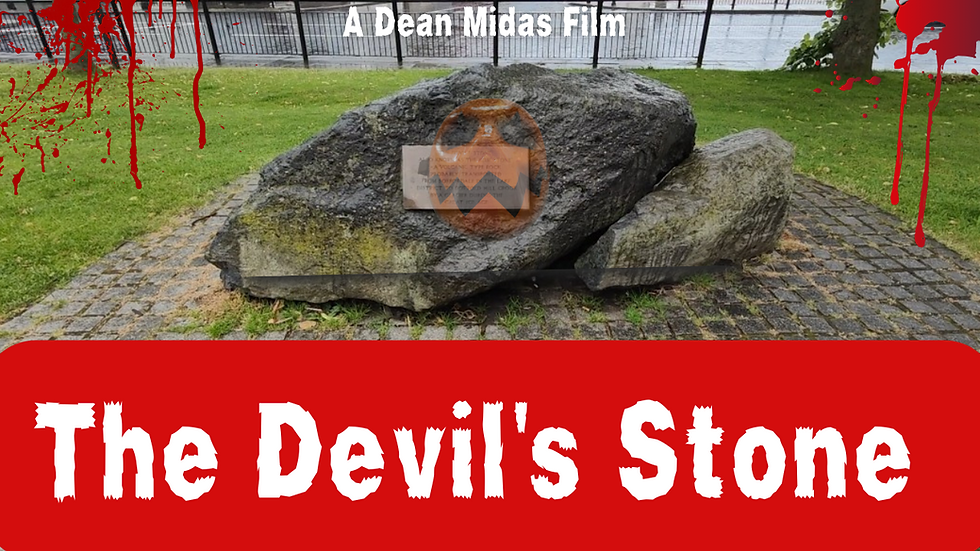Berlin-Berl by artist Jakob Kudks Steensen transforms Halle am Berghain
- Darkus
- Aug 14, 2021
- 3 min read
Updated: Aug 16, 2021
At Darkus, we are always on the look out for interesting exhibitions, restaurants and artists. So when we read about "Berl-Berl" we knew we had to visit. But what is "Berl-Berl"? It's essentially a parallel world, a world you can't escape, a mixture of feelings expressed through 3D visuals and sounds.
The idea of "Berl-Berl" came about when LAS (Light, Art, Space) Director, Bettina Kames invited curator Emma Enderby to conceive of an exhibition for Halle am Berghain. Emma proposed the artist Jakob Kudsk Steensen, after meeting him in NYC in 2018 and being struck by his use of technology to create virtual worlds that tackle deeply universal and conceptual questions. The artist spent months researching the remaining wetlands of Berlin-Brandenburg, creating an archive of images using a method of macro photogrammetry in which he takes hundreds of images of a single object such as a leaf or patch of mud. Kudsk Steensen renders his findings in a 3D plan to create an immersive, absolute landscape using the video game platform Unreal Engine, a constant within his practice.
That's how Jakob transforms Halle am Berghain with a vast installation of natural worlds, presenting a combination of Berlin’s wetlands, its species and ancient swamp mythologies.
Working at the vanguard of art and technology, Kudsk Steensen is known for blending storytelling and scientific research with cutting-edge gaming and virtual reality tools to reinterpret ecological landscapes.

From 10 July – 26 September, visitors will experience a journey through a virtual swamp that covers Halle am Berghain’s 1,435-square-metre space. Essentially a live experience, the immersi- ve worldunfolding in the exhibition space streams the virtual environ- ment which will be accessible on BerlBerl.world.
Also existing as a parallel world, Berl-Berl combines technology with human language and sound landscape. To create the work, KudskSteensen documented local wetlands using macro photogrammetry, allowing him to 3D scan flora, soil and natural specimens inelaborate detail, otherwise invisible to the naked eye. In collaboration with musician Arca and sound artist Matt McCorkle, a site-specificsoundscape combines archival recordings of wetlands —recorded in Berlin between the 1960s and today—with samples of Arca’s voice andspoken examples of the various names by which Berlin has been called over the centuries.

“Berl-Berl is a song and an organ for swamps, mourning the lost and embracing the new (being in the moment of transition), revivingwetland sensibilities and perspectives, making people appreciate the complexities and beauties of swamps around Berlin”, said JakobKudsk Steensen.
‘Berl’, the Slavish word for swamp, is thought to be the origin of the word ‘Berlin’. Like many metropolises around the world, Berlin originated on a wetland – a saturated landscape capable of sustaining life. Languages, songs and mythologies tied to swamps have travelled throughout the Brandenburg region since pre-modern eras. Covering only 1% of the planet’s ecosystems, wetlands conversely account for 10% of its biodiversity. Yet despite their crucial environmental role, they are often perceived as dangerous, murky or repellent. Kudsk Steensen is compelled by this disconnect, as well as the history and mystery of these sites, simultaneously generative and decaying.
Berl-Berl seeks to restore its capacity for connecting to the environment and attune its perception and capacity for connecting to the environment and attune people's perception of these landscapes as mystical, beautiful and fertile.

We got lost and relaxed during our visit, we got fully immersed, deep down into the world of Berl-Berl. Although existing in the digital realm, the landscape feels like a giant living organism – permanently changing and attracting the visitors attention. The multilayered soundscape amplifies this effect during the experience. The audio component shapes a haptic experience: zones of sounds are connected to the screens and the objects on them—operating at turns together and alone. This incorporates both playfulness and sensitivity, combined with the images it makes for an experience ‘like being trapped in a vivid dream’ as you describe it. It's a place we didn't want to leave yet we wanted to escape, like Alice who fell into the rabbit's hole.
Jakob Kudsk Steensen also related to this as: ‘Berl-Berl is a poetic environment that seeks to revitalise lost sensibilities’. And what he means by that is, that Berl-Berl gives visitors the chance to get lost in a vibrant digital world: in a virtual swamp, where they can experience and see parts of an ecosystem that are usually not accessible to us, like diving under water inside a tree trunk or under a bog or seeing certain plants hugely magnified and from a new angle. The effect this has on visitors goes beyond the artist's expectations, but is exactly what LAS's aim is, a different kind of art experience. Berl-Berl merges times and shifts perspectives as a hybrid ode to this city founded on a swamp and the memory of this lost world. It is the artist’s hope that this perspective sparks a newfound appreciation for the swamp and perhaps even a way to reimagine our role within this ecosystem that sustains us.
For info and tickets, visit https://lightartspace.org
.png)



Comments